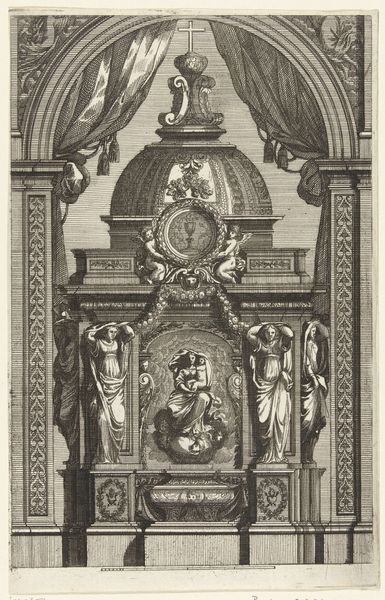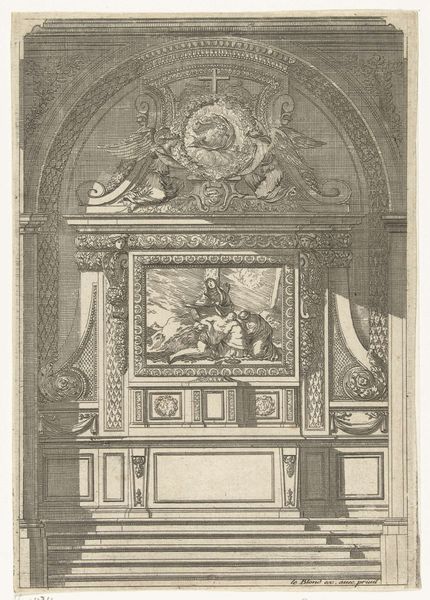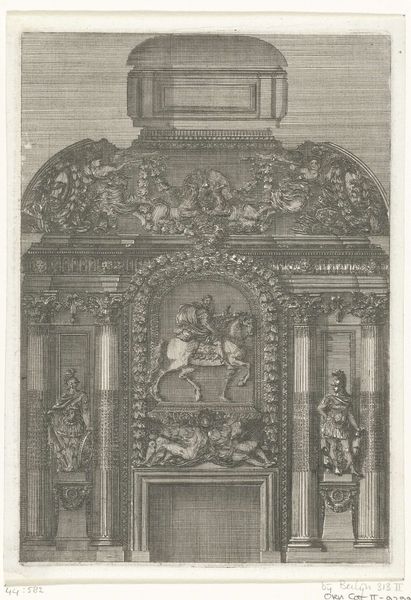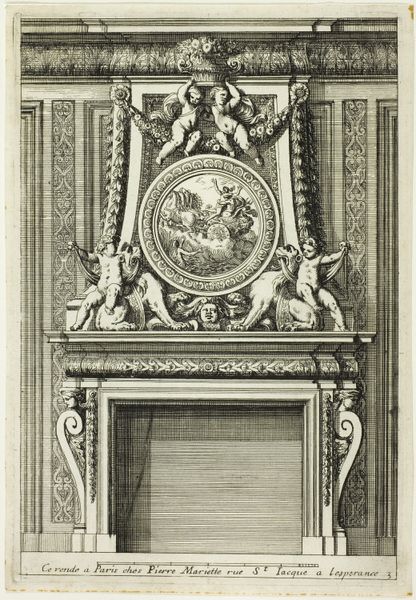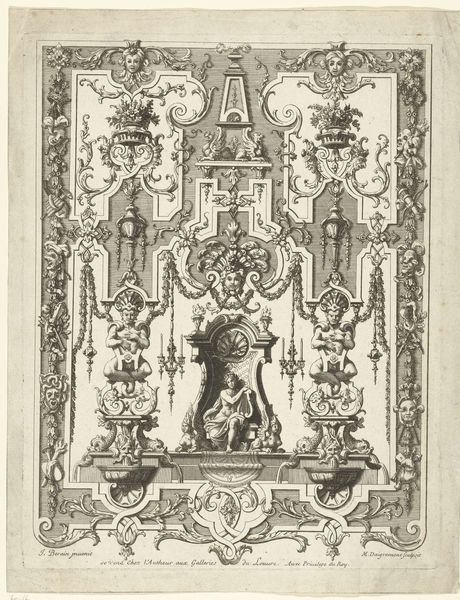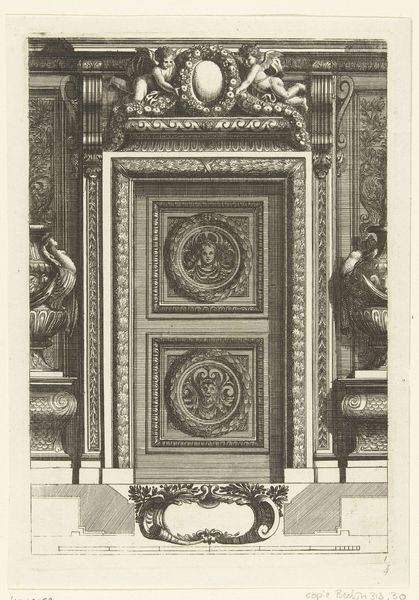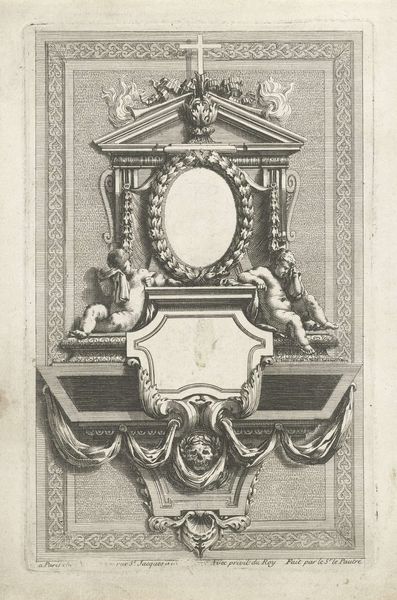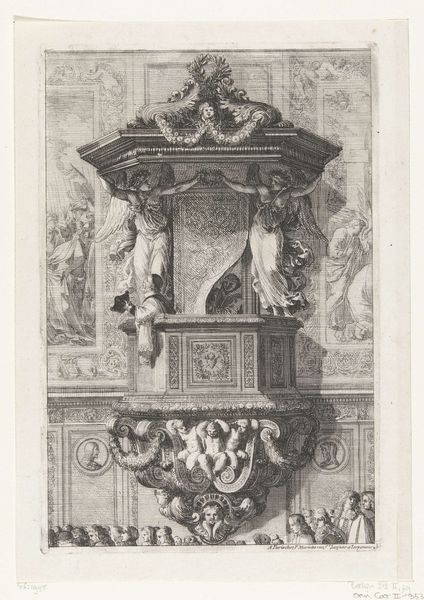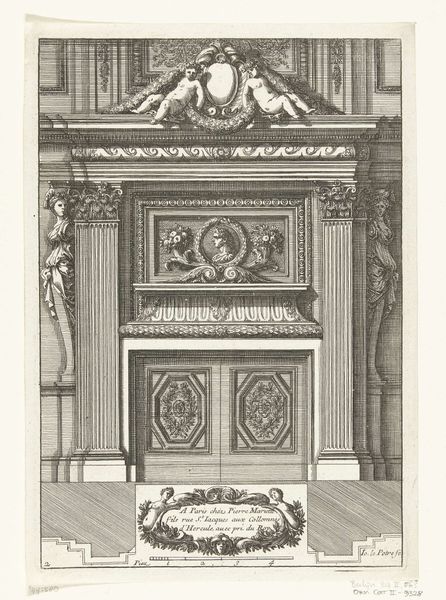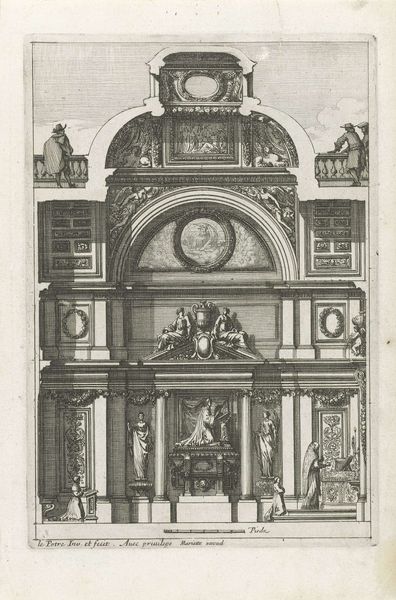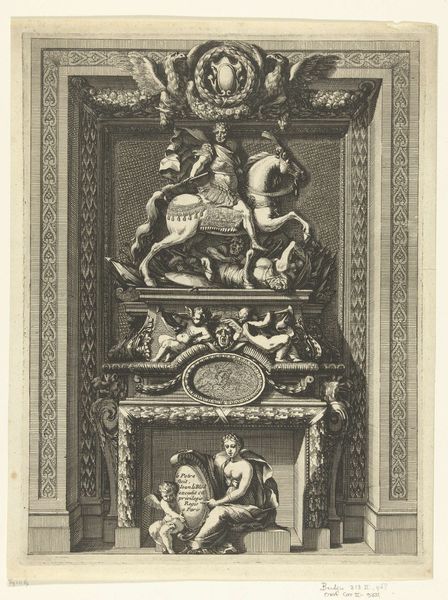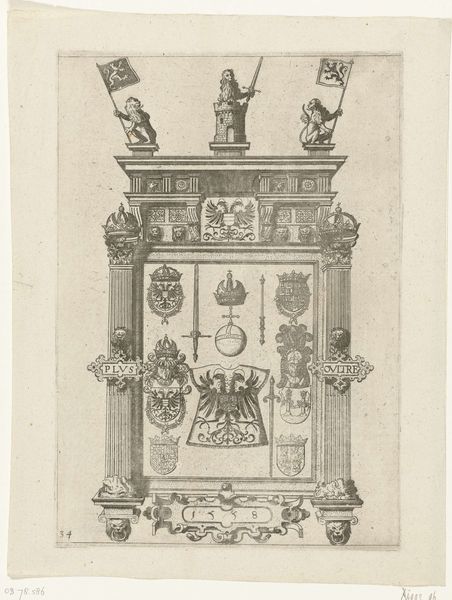
drawing, print, metal, engraving
#
drawing
#
baroque
# print
#
metal
#
old engraving style
#
engraving
Dimensions: height 224 mm, width 145 mm
Copyright: Rijks Museum: Open Domain
Curator: Look at the way this "Tabernakel in vorm van triomfboog", or "Tabernacle in the Shape of a Triumphal Arch", crafted between approximately 1650 and 1678, overwhelms the senses with its intricate Baroque style. Editor: Overwhelms is right! There is such incredible density of image here; you can see the meticulous rendering with fine lines giving everything a somber gravitas, don't you think? It reminds me of theatrical stage design. Curator: Indeed. Made with metal engraving techniques, this piece speaks volumes about the period's artistic priorities: power, religion and precision. These prints circulated widely allowing the design to influence the creation of the physical tabernacles throughout the region. The dissemination of style, the visual language... Editor: And such language it is. Triumph is, well, *triumphant* in the overall form, with statues, columns, floral displays and putti - what meaning can you extract? For me, this overflowing, rich composition aims to reassure believers of God's, or the church's, omnipotence on Earth. The cup below feels symbolic. Curator: Exactly! The chalice at the bottom underscores its liturgical function within a specific social context, indicating both wealth and faith being openly showcased as social virtues of this historical period. And you see how these archways with images of religious figures within acted as powerful statements. Editor: I love seeing the faces within these frames. Looking at this imagery as something more than religious propaganda or pure architectural ambition. Seeing these figures rendered feels akin to peering through memory: distant, historical, yet brimming with layered human expression nonetheless. Curator: So true! Examining the purpose of printed imagery during the mid to late 17th Century offers a fascinating lens into cultural, political and personal landscapes then. Editor: In fact, immersing myself within its iconography offers a perspective beyond pure faith – instead touching mortality and remembrance as key cultural forces. Curator: Beautifully said, providing much for both faith, and the exploration of visual culture. Editor: Well, from symbolic depth, the piece reveals so many truths in art.
Comments
No comments
Be the first to comment and join the conversation on the ultimate creative platform.
